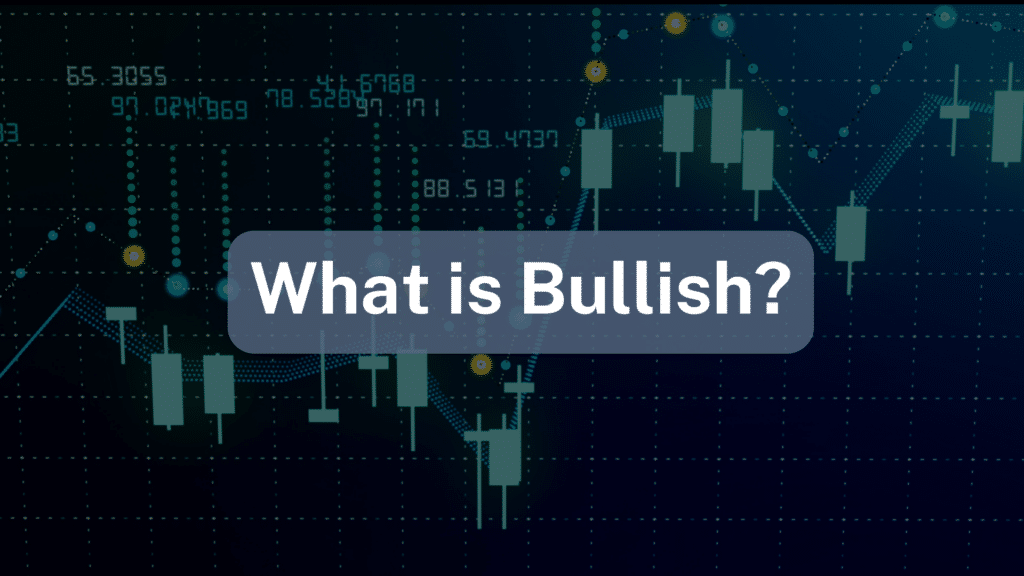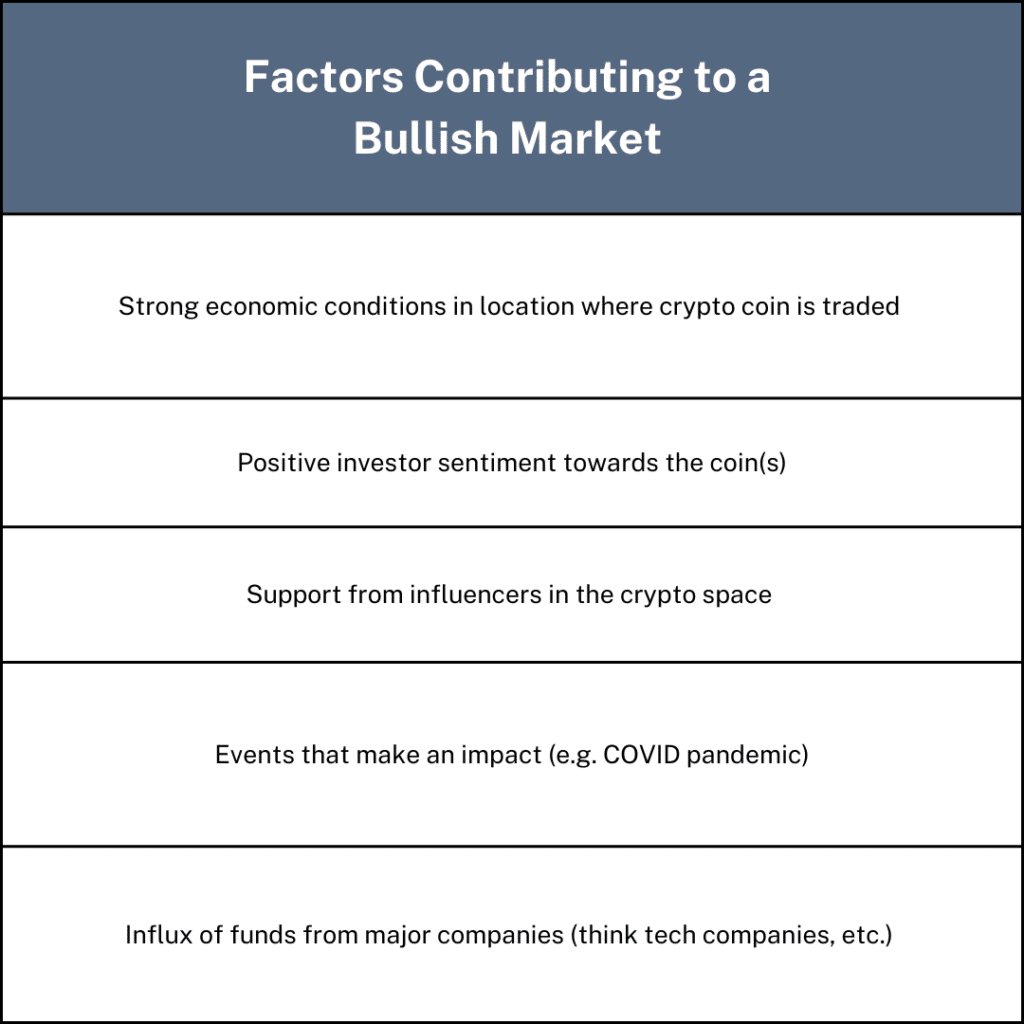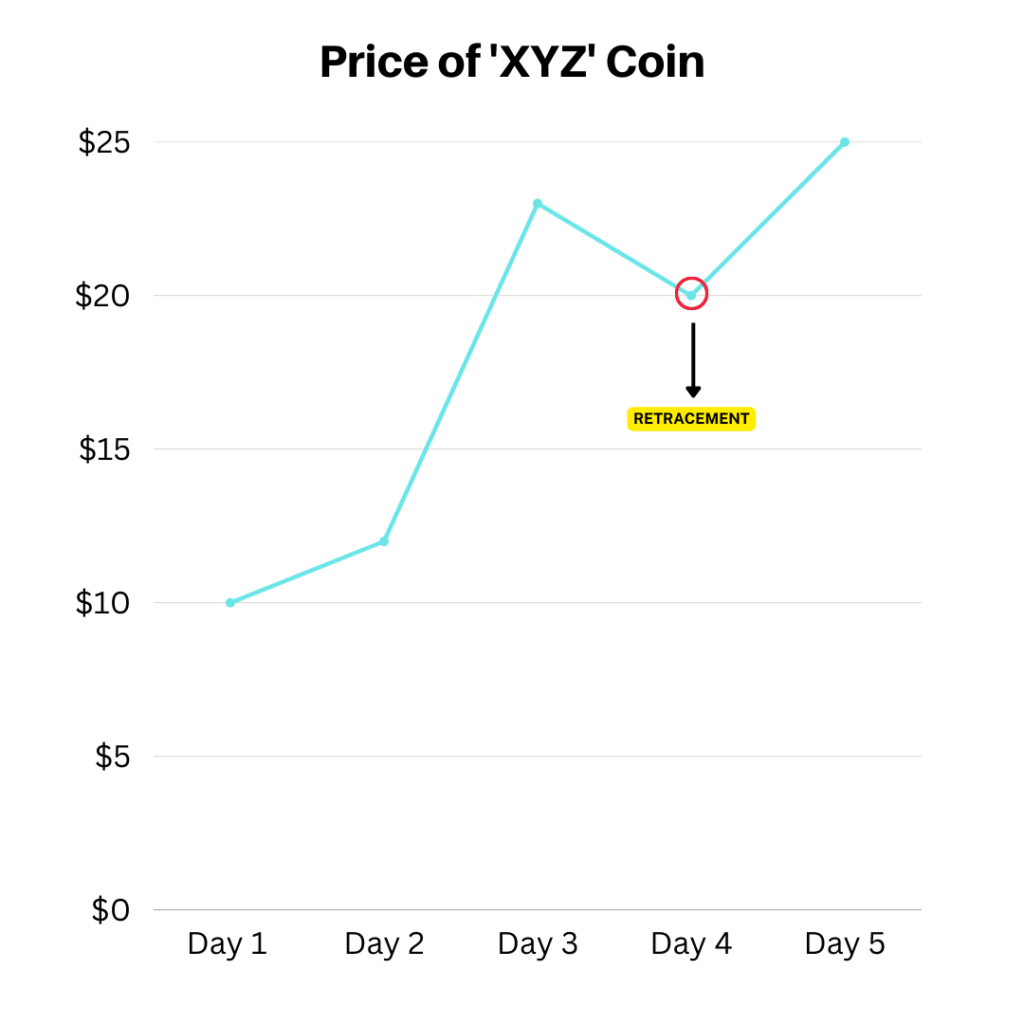What is Bullish?
Bullish is an attitude or belief that the value of a cryptocurrency will increase.
“I’m bullish on Ethereum so I’m going to buy more.”

The Long Definition
“Bullish” refers to wall street’s famous ‘bear vs bull’ image. A bear is someone who believes that prices will drop, while a bull is someone who believes that prices will rise.
The word Bullish describes the belief that cryptocurrency prices will increase either in the short or long term. A bullish investor, or bull, is an investor who thinks crypto prices are going to rise.
Bullish is also used to describe the continuous increase in cryptocurrency prices over a period of time (weeks, months, or years).
Bullish trends signal strong or strengthening market conditions. These conditions push crypto prices upwards and attract investors into the space. They also encourage the creation and launch of new crypto projects and developments.
Understanding a bullish trend
A bullish trend is a long-term increase in the prices of crypto assets. However, cryptocurrencies are very volatile. This means that increases and drops in value are common.
Therefore, to draw a clear distinction, experts have developed a specific explanation. It says that a trend is truly bullish when prices rise by 20% after two declines of 20% each.
This typically happens as a result of strengthening market conditions. It can be limited to a specific cryptocurrency or apply to the crypto market as a whole. The latter typically leads to a bull market.

In such a market, investor confidence in cryptocurrencies is high. Prices are rising, and there is a belief that prices will continue to rise for an extended period. In fact, most bear markets result in individual cryptocurrencies hitting all-time high prices.
The general optimism attracts many new investors. Everyone is encouraged to buy as many tokens or coins as possible. This increases the demand for crypto. At the same time, those already holding are unwilling to sell, creating a mismatch in demand and supply that drives the prices even higher.
Bear markets are also characterized by the birth of new crypto projects. This is because good market conditions encourage many crypto entrepreneurs to launch their own projects, hoping to capitalize on investor optimism.
Initial coin offerings (ICOs) are the primary means to raise capital for such projects. They are a standard feature of bull markets.

How do I take advantage of bullish trends?
A bullish trend is a huge investment opportunity. Generally, the idea is to buy when the prices are low and sell when they reach their peaks. The simplest way to do this is to buy and hold.
You buy a set amount of cryptocurrencies and hold onto them until they reach their maximum prices. This is a straightforward, passive approach that carries the least amount of risk.
There are other more active investment strategies, though. The first is known as dollar cost averaging. This is a close variation of buying and holding that involves purchasing a specific amount of cryptocurrencies at regular intervals.
These intervals can be price-based. So, you buy every time the price of an asset increases by a set amount, like $30 or $50. They can also be purely time-based. In this case, you buy crypto periodically, every one or two weeks, for example.
Note that it’s improbable that crypto prices will only ascend in a bullish trend. While the general trend moves upwards, there are short periods where the price drops before picking up again. These slight dips are known as retracements.

They usually present opportunities that more experienced investors take advantage of in the following ways:
- Retracement addition: This strategy is for investors looking to buy and hold. They target retracements because the dips allow them to buy assets at a discount.
- Full swing trading: This is a riskier approach. It involves taking advantage of price fluctuations during a bullish trend by regularly buying and selling cryptocurrencies.
How long do bull markets last?
The crypto space is relatively young. It isn’t as mature as the stock market and is much more volatile. Thus, bull markets typically last for one or two years before turning bearish. On the other hand, bull markets in the stock market can last up to a decade.
Want to join the Dypto journey? Follow our socials!